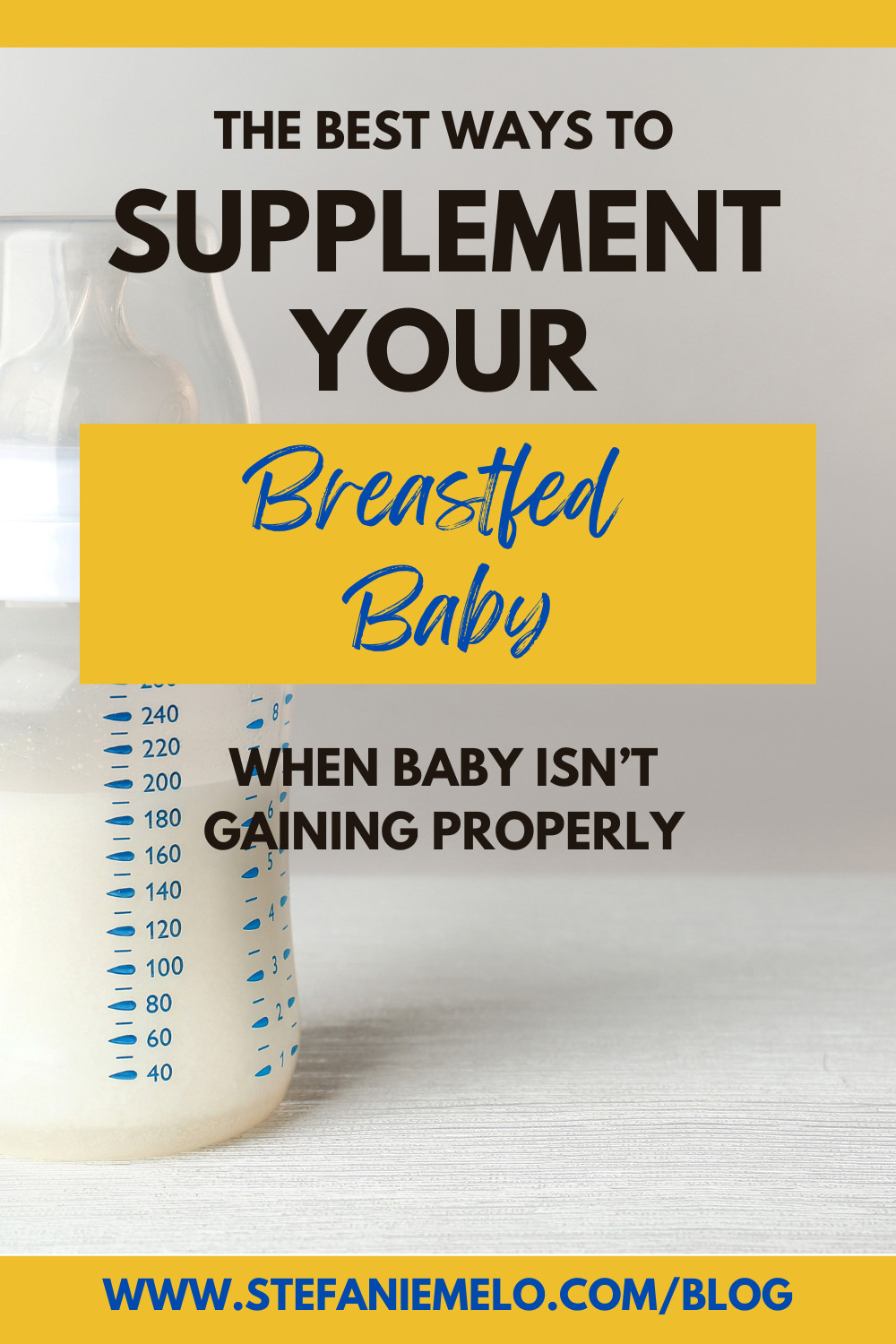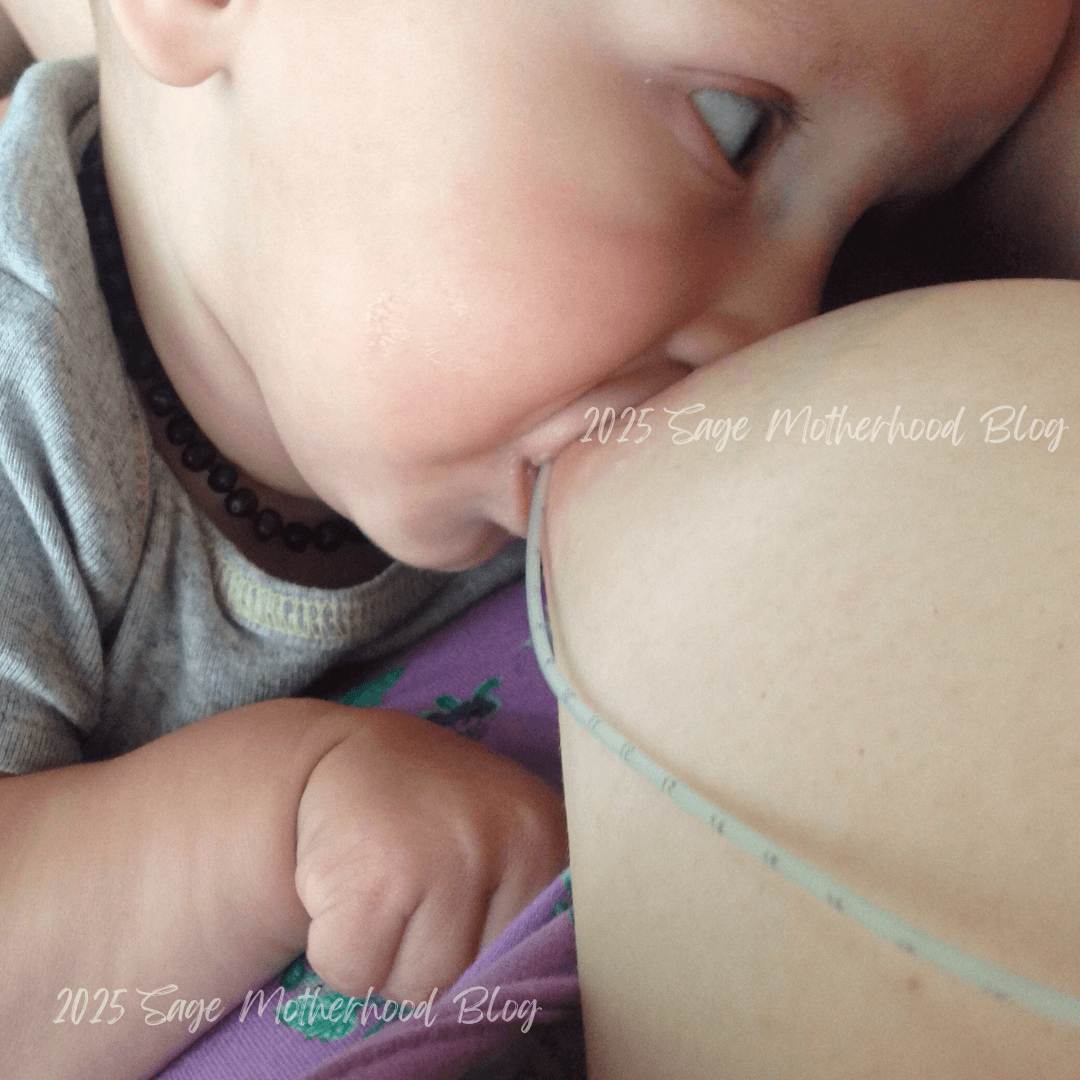
Supplementing without Sabotaging Your Milk Supply, Part 2
Today, we're talking about supplementing so that baby gains enough. When you know how to make sure your baby is gaining enough, it takes so much pressure off the other three pieces we're covering in this series.
*If your baby is not making enough diapers
*If your baby has not regained birth weight by 7-14 days
*if your 2 - 16 week old isn’t gaining 1oz per day 7 days a week
*If your baby over 4 months isn’t gaining 5-7 oz per week
*if your 6-12 month old isn’t gaining 2-4oz per week
Appropriate Diaper Output
Day 1 | Day 2 | Day 3 | Day 4 | Day 5 to 6 weeks | 6 weeks |
1 wet diaper | 2 wet diapers | 3 wet diapers | 4+ wet diapers | 6+ wet diapers | 4-5+ sopping wet diapers |
meconium | dark stool | brown stool | light brown stool (can be greenish) | 3-4 yellow stools, the size of a quarter | 1+ stools every 1-14 days |
Wet diaper = to under stand how "wet" a diaper needs to be to be considered "wet"
For younger babies: pour 45mls of water into a diaper
For older babies: increase this amount to 60-90mls.
Appropriate Weight Gain
Days 1-4 | Days 5-14 | Up to 4 months | 4-6 Months | 6-12 months | |
Appropriate Gain | Weight loss | Ideal: 1 oz/day average of 7 oz+/week | Ideal: 1 oz/day average of 7 oz+/week | 4-5 oz/week | 2-4 oz/week |
General Rule | Up to 10% | Return to birth/24hr weight by day 14 (day 8 ideal) | 2x birth/24hr weight by 4 months | 2x birth/24hr weight by 4 months | 2.5-3x birth/24hr weight by 12 months |
Weight gain should be counted from the baby's lowest weight, not birth weight while navigating this challenge.
So, you need to supplement
That doesn’t mean you should stop breastfeeding, especially if it’s very important to you. The best case scenario is you navigate the rough patch and solve the problem (more on this soon) and return to exclusive breastfeeding. In the last post, Protecting Your Supply, I shared that the way you choose depends on your unique dynamics as a mom and baby so check that out if you haven’t already. Let’s dive into the nitty-gritty of supplementation without sabotage.
Safety Essentials:
- You need to weigh your baby at least weekly, on the same scale, stripped down without a diaper. You can tare a cloth diaper on the scale if you’re really worried about pee/poo. I didn’t have the emotional bandwidth for multiple doctors visits so I bought this scale. https://amzn.to/4iogYnx You can get cheaper ones, just make sure it measures down to half of an ounce. I like that this one transitions for toddlers and works up to 44lbs.
- The standard “weight determines milk need” doesn’t accurately apply to infants who have gotten behind on weight gain. It’s better to address age, intake and weight gain. For example, a 3 day old won’t need as much per feed as a 3 week old will.
- Keep your eye out for jaundice.
- Watch for signs of dehydration: a strong smell, reddish crystals (aka brick dust) is a sign of dehydration. 6 hours without a wet diaper indicates dehydration. Dry lips, a sunken soft spot, crying without tears, lethargy, excessive fussing are all signs of dehydration.
How Much Do I Supplement?
First, your baby should NOT go longer than 1 five hour stretch in 24 hours without a feed. No matter how tired you are, or how painful it is to wake a sleeping baby. In order to get the minimum feeds per day (which also equates to volume) you'll have to have feeds closer than 3 hours if baby sleeps 4-5 hours once per day.
The answer is: however much is needed for a baby to gain 1oz per day (under 4 months) or about ½ oz per day for 4-6 month olds or ¼ oz per day for babies 6-12 months.
Assuming your baby has lost 10% or more or isn't gaining 1oz per day, I would begin with 1oz per feed 8x a day until they are back on track, then adjust as you figure out the cause of the slow gain or low supply. My preferred supplementation is an at breast supplementer so that you don’t have to pump as much and can still protect your supply. However, that’s not the right path for everyone and for some it’s not possible.

How Do I Supplement?
One method that you’ll hear OFTEN is “bring baby to the breast first” because it’s assumed that a baby will be more efficient at the beginning of a feed. Sometimes this works very well, limit amount of time at each breast then finish with the bottle. For some sleepy or really cranky babies, this might not work.
In this case, start with ½ ounce of milk in a bottle, syringe or at-breast-supplementer to soothe baby, then you can switch to the breast. Stop using the supplement when you stop hearing swallows or if baby finishes the milk. Then switch breasts (up to 10 minutes per breast is most often recommended in these circumstances). If the baby still shows hunger cues, top off with the remaining half an ounce in the bottle, syringe or at-breast-supplementer.
When using an at-breast supplementer, you can control if baby gets milk from that. If you can get the hang of using one, it really streamlines this process. It’s a learning curve though, so don’t be hard on yourself if you cannot.
Please know that if you are unable to get baby to latch, are very stressed or anxious it is OKAY to let someone else feed baby while you pump as you get baby back up to the right gaining. It takes TIME to figure out the lactation equation for each mom & baby dyad. A few days of letting someone else feed while you pump and your nipples heal is fine.
Control the Flow
When using bottles it is very helpful to have an appropriate nipple shape and flow. I didn’t know this when I first started out and always wondered why my babies were “so efficient” at feeds. The flow of our bottles was just unnaturally fast. I’ve seen several savvy IBCLCs recommend the nipple linked above for moms who breast and bottle feed. My understanding is it can be combined with several brands of wide bottles and is free of PFAs. You can also buy glass bottoms.
Additionally, using paced bottle feeds will help the baby replicate the “suck, suck, swallow” of typical breastfeeding. Paced bottle feeding can be used with any bottle type. This can reduce reflux due to excessive intake, pit up due to a flow that is too fast and reduce gas. I find it very hard to get a good photo of paced-bottle feeds while holding my own baby, but here is my older baby with the bottle level as it should be instead of the "reclined/angle" feeds I was used to before having my own kids. 

I'll be back soon with information to uncover the causes of low supply, if your supply is the issue at hand.
What's Next?
If you aren’t in an urgent situation, stay tuned to this four part blog series. Part 1: Protecting Your Supply
If you’re in the THICK of it, please set up a free consultation with me. You can also use my Breastfeeding Trouble Shooting Guide to get some answers while you wait for our appointment.
If you're struggling with your breastfeeding relationship, DO NOT WAIT to get help. The sooner you intervene, the better it is for everyone.
.
 You're probably so excited about welcoming your baby into your home, if you're like most moms you're probably flipping through a few books, you've download some apps, and listening to your friend's and family's experience. You're probably doing your part to be a star patient for your doctor or midwife.
You're probably so excited about welcoming your baby into your home, if you're like most moms you're probably flipping through a few books, you've download some apps, and listening to your friend's and family's experience. You're probably doing your part to be a star patient for your doctor or midwife.I totally get that, and this is actually a problem because you're going to get you varied, sometimes conflicting advice that might not even work for your circumstance, and here is the kicker: lots of time's it not evidence-based guidance.
Instead of that, I want to offer you that working with a doula from your first trimester through your postpartum time is actually going to give you what you really need: cohesive information, expert guidance and the emotional support that every new mom deserves. It's like having an a doula in your pocket (or purse if that's where you keep your phone)
Hiring a Digital Doula is the best way to have a positive experience during your pregnancy, birth and postpartum. I would love to be your digital doula.








0 Comments